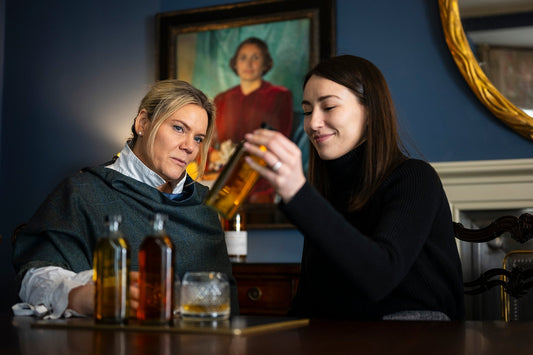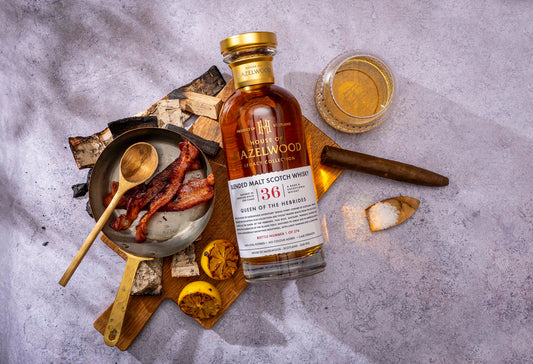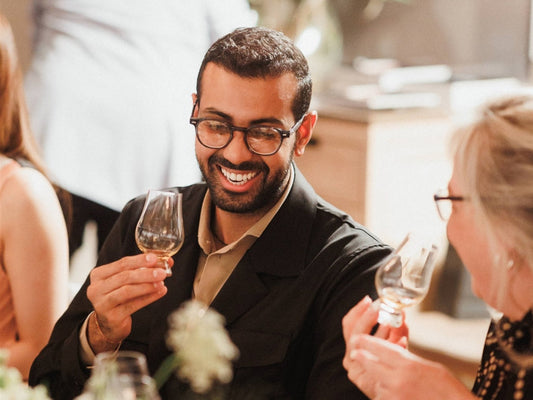Often, knowing so little about a whisky is part of its charm. Guest writer Kristiane Sherry explores why a whisky’s secrets add to its enchantment – and how not knowing every detail about whisky production deepens the fascination.
It was a frozen February afternoon in Stockholm’s Old Town. Ice clung to every surface, grey air muting the distinct, vibrant buildings. It was the sort of cold that bites with every inhale. Tucked inside a bar, just off one of the winding streets, I had my first whisky. All at once it provided both physical warmth and ignited a sense of intrigue I’ve never managed to quench. Nor have I wanted to. That deep sense of wonder is shared by many the world over – however much we dissect or debate a whisky, every drop still holds secrets.
Since that day I’ve tasted thousands of whiskies. And every moment is the same: meet a new whisky and it becomes a journey to deciphering its history. Because every expression has its own narrative. Some stories are told on the bottle. Others are apparent through the liquid itself. But the most compelling tales are never told and can only be surmised.
Let’s Start with Whisky Production
Let’s start with whisky production, arguably the least romantic element. Even for younger whiskies, we rarely know the specifics of a malting, mashing, fermentation and distillation run. What was the weather like that day? How did the heat or humidity affect the myriad of reactions in the washback or still? Unless it’s a single cask, how many were meticulously married or blended together? What flavours and textures has each aspect contributed? Yes, many single malts and blends are carefully and exactingly batched for consistency. But we still don’t know the backstories. For younger releases, we have a clearer idea. But now imagine the tales of whiskies matured for decades. 30, 40, 50-plus years. It’s like looking back in time – ledgers and hand-kept records give some idea, but impressions eventually only give way to conjecture. And there again is the allure.
Then let’s take people. I love to imagine the hands that malted the barley. The arms that lifted sacks of yeast. The warehouse keepers that presided over slumbering casks. And the minds that decided how long to ferment for to magnify each flavour. The perspectives that prescribed distillation cut points, that defined what that central character should be. Philosophies change over the decades and centuries. Who were these people who crafted the whisky that fills our glasses today? What were their passions and inspirations that informed their work? There’s mystery in their stories, too.
Even today, comparatively little is understood about the chemistry of whisky-making. Contrast the rigours of winemaking academia with the relatively recent advent of distillation study. With every passing year, we better understand the complexities of oak maturation – just as one example. But there’s still so much we collectively haven’t tracked, mapped, or proven. Take the presence of salinity in some whiskies. Many have it: distilleries by the sea, peated expressions, drier blends. It can’t be salt – distillation is strikingly efficient at desalination. But the sense of it is there. So, what is that note we’re getting in so many whiskies?
There’s a regulatory element too. Scotch whisky producers are barred from disclosing many of the component parts in their blends. The Scotch Whisky Association, often seen as a gatekeeper, doesn’t permit it. There’s a fear the practice could be misleading – state anything beyond the youngest drop and it could confuse. What it does instead is keep the riddle of the recipe a secret – something to be discovered.
Creatively there are enigmas, too. Why disclose everything? Even I, as a sentimental soul, am aware of the industrial elements of distillation and the dry reality of efficient production. But I don’t want to consider them while sipping. But take away the commercial, and there are still practical reasons we don’t always know much about our whiskies. Perhaps casks have been traded – in recent or far past – with the agreement the parent distillery won’t be disclosed. Or maybe archives have simply been lost. Just because a blend, or indeed a single malt, is labelled without its ancestral home, doesn’t mean it is to be avoided. It means we look to its flavour for its story.
"Every glance, nose, sip gives us a clue to a whisky's past."
And that’s where we come back to tasting. Every glance, nose, sip gives us a clue to a whisky’s past. While hue can’t allude to much, colour and intensity hint at cask type. Aroma and flavour build layer upon layer of storytelling. Distillery character. Process. Philosophy. Maturation. Even how the essence lingers like the sillage of a fragrance suggests secrets we can never be sure of.

A House of Hazelwood blended Scotch that holds tightly to its secrets is The Unknown. Precise details of its provenance have been lost to history, but it is known that its elements were distilled in 1978, prior to blending in 1989. There’s enchantment in the mystery: the latter 33 of its 44 years were spent in a single refill butt. Before that, we can only imagine. Two other more cryptic bottlings include The Old Confectioner’s and A Trail of Smoke. For decades, their individual parts have rested and matured, mysteries deepening as flavour compounds married together. The Old Confectioner’s has 44 years of sherry influence, A Trail of Smoke 42, with peated island character coming through in a narrative of its own. All three releases are precious – rich, deep and elegant, they may be a closed-book in their identity, but they are profoundly expressive.

Does it really matter that we can never be certain of a whisky’s production and past? Not at all. Experiencing a whisky from that sense of intrigue, that acknowledgement that we can never know everything, only adds to the charm. But we can discover elements. And approaching the mystery from a flavour-first perspective is the biggest joy of all.




